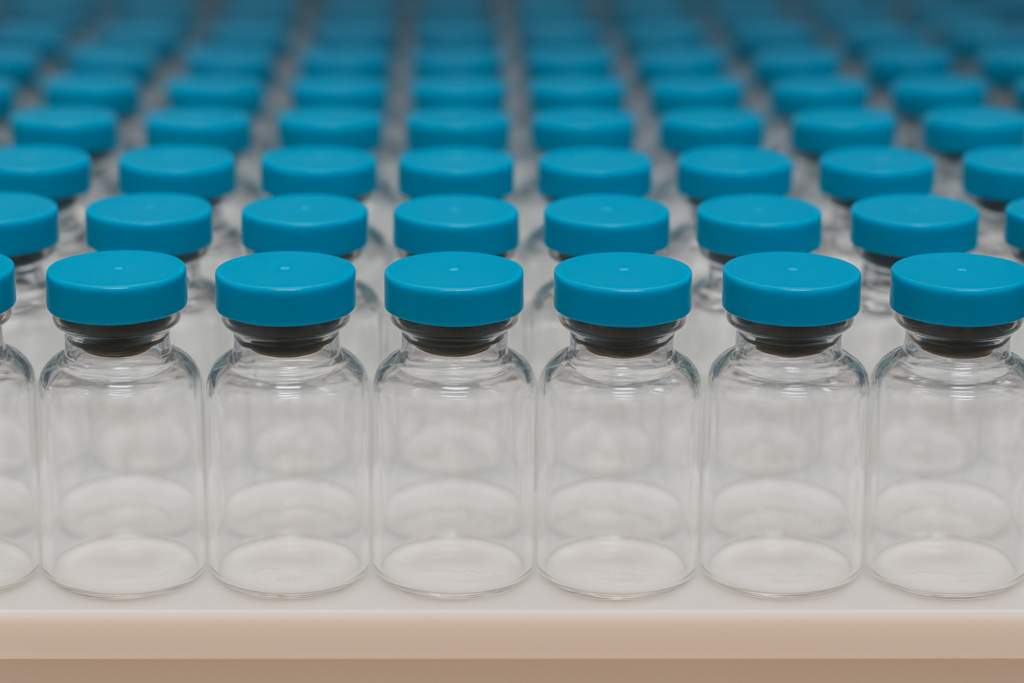Introduction
Players in the pharmaceutical industry seek to maintain manufacturing efficiency in an environment of stringent quality requirements and high regulatory oversight. As highlighted in a recent industry presentation by a senior compliance expert at Parexel, this means balancing quality and regulatory standards with productivity and cost reduction needs.
The adoption of artificial intelligence (AI) technologies in pharmaceutical manufacturing represents a powerful approach to meeting these sometimes competing demands. AI has the potential to revolutionize drug development, production, and quality control processes, ultimately improving patient outcomes and bringing medicines to market more efficiently.
This potential transformation is particularly evident in automated visual inspection systems, where traditional approaches face significant challenges ranging from human inspection limitations to high false rejection rates.
Understanding AI
Before exploring specific applications, it’s important to understand conventional AI application areas.
- Artificial Intelligence (AI): Computer systems capable of performing tasks that typically require human intelligence, such as text recognition, decision-making, problem-solving, and data analysis.
- Machine Learning (ML): Systems that learn from data, identifying patterns and making predictions, often with some human intervention to correct mistakes.
- Deep Learning: A subset of machine learning using neural networks to solve complex problems and discover intricate patterns in large datasets.
- Computer Vision (CV): Systems that interpret images or videos, often employing machine learning or deep learning techniques.
- Natural Language Processing (NLP): Systems that interpret text and perform tasks, including speech recognition, sentiment analysis, and automatic text summarization.
- Large Language Models (LLMs): Advanced systems trained on massive datasets of text and codes to learn patterns in human languages and make predictions.
AI Applications in Pharmaceutical Quality Control
Several of these AI technologies can be used to address specific challenges in pharmaceutical quality control and manufacturing operations.
Automated Data Analysis
AI systems can analyze large volumes of data collected during various stages of the manufacturing process, including quality control tests, environmental monitoring, and batch records. This capability allows for rapid identification of patterns or anomalies that might indicate quality issues.
Real-Time Monitoring
AI can enable continuous, real-time monitoring of critical quality parameters, such as temperature, humidity, pressure, and pH levels. This continuous oversight ensures that parameters remain within acceptable ranges, with automated alerts triggering immediate corrective actions when deviations occur.
Root Cause Analysis
One of AI’s most powerful applications is root cause analysis. Traditional approaches often struggle to identify contributing factors to quality issues, but AI can analyze complex datasets to identify both one-off and systemic problems.
Consider the extensive data that could be integrated: quality testing parameters, equipment performance, environmental monitoring data, pressure differentials, temperature and humidity variations throughout production, operator information, shift records. Manual analysis of all these factors would be extraordinarily time-consuming, but AI can rapidly identify patterns that might be contributing to quality deviations.
AI-based Visual Inspection
One of the most impactful applications of AI in the pharmaceutical industry is visual inspection. AI-powered computer vision systems analyze images to identify variations in product appearance, labeling, or packaging with remarkable precision. These systems excel at detecting subtle defects that human inspectors might miss.
AI-based inspection demonstrates particular value with challenging products that exhibit inherent variability, such as lyophilized (freeze-dried) products, suspensions, powder-filled vials, and colored solutions. While traditional automated visual inspection systems struggle with these products—often generating false eject rates as high as 30%—AI-enabled systems significantly reduce these errors.
Implementing AI-Based Visual Inspection Systems
Although AI-based visual inspection systems use fundamentally different techniques for defect detection than traditional systems, they follow a similar qualification process.
- Installation Qualification (IQ): Verifying proper installation of all physical components, including cameras, lighting, and computer systems.
- Operational Qualification (OQ): Testing system functionality under typical operational conditions, including creating functional test recipes and comparing performance to human inspectors.
- Performance Qualification (PQ): Validating system performance under real production conditions, typically by running production batches through the system and conducting elevated Acceptable Quality Limit (AQL) inspections.
Business Impact of AI-Based Inspection
The financial implications of implementing AI-based inspection systems can be substantial, particularly through reductions in false eject rates. Traditional automated inspection systems often reject 10–30% of acceptable products, while advanced AI systems using unsupervised machine learning can reduce false reject rates to 1% and 5% depending on the visual complexity of the container and pharmaceutical ingredients.
For a manufacturer producing 5 million units annually with a unit cost of $10, reducing the false eject rate from 10% to 3% could save $3.5 million. These savings stem not only from recovered product value but also from increased throughput, reduced re-inspection costs, and fewer deviations requiring investigation.
Conclusion
The adoption of AI in the pharmaceutical industry has the potential to improve patient outcomes, bring medicines to market more efficiently, revolutionize quality and operations processes, and lead to increased efficiency and enhanced compliance with regulatory requirements. While new regulations are being developed and inspection strategies continue to evolve, the key to successful implementation lies in cross-functional collaboration between quality experts, process specialists, and 3rd-parties that are experts in a specific area of AI.
The pharmaceutical industry possesses extraordinary data resources—perhaps more than any other industry—yet it has often lagged behind others in leveraging this data through AI technologies. The opportunity now exists to transform this data into actionable insights that drive quality improvements, operational efficiencies, and, ultimately, better patient outcomes. By embracing AI-based inspection and quality systems, pharmaceutical manufacturers can address longstanding challenges in both human and traditional automated inspection processes in an increasingly complex regulatory environment while positioning themselves at the forefront of innovation.



